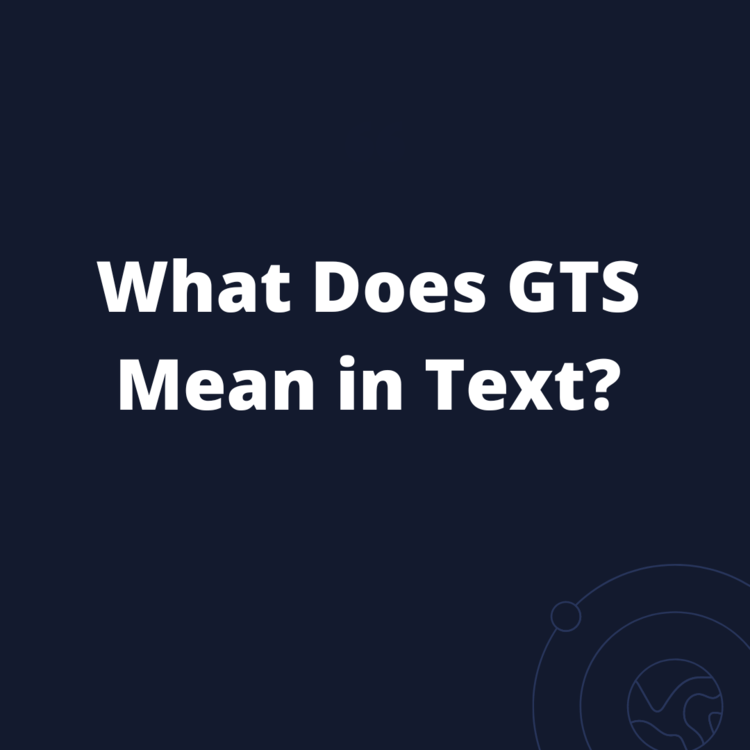
GTS in texting stands for Google That Sh*t, a modern acronym used to playfully instruct someone to look up information on Google. In this digital age where knowledge is just a few clicks away, GTS has become a cheeky way to encourage self-research and empower individuals to seek answers independently. It reflects the quick-paced nature of communication today, where efficiency and self-sufficiency are highly valued.
Beyond its practical use, GTS also encapsulates a sense of curiosity and initiative. By prompting someone to search for information themselves, it promotes critical thinking and resourcefulness. The phrase embodies the notion that information is readily accessible if one takes the initiative to seek it out, emphasizing the importance of being proactive in learning and staying informed in a world inundated with data. So, next time you come across GTS in a text message or online chat, remember that it’s not just about finding an answer but encouraging an active mindset towards knowledge acquisition.
Common usage and context in messaging.
When it comes to messaging, context is key. The way we communicate through text can sometimes lead to misunderstandings due to the lack of tone and body language. Understanding common usage in messaging helps us navigate these potential pitfalls and ensure clear communication. From using emojis to convey emotions to abbreviations like lol or brb, each element adds layers of meaning in our text conversations.
In a world where communication is increasingly digital, knowing the nuances of messaging can make all the difference in building strong relationships. For example, the use of haha may indicate light-heartedness or sarcasm, depending on the context. Similarly, acronyms like tbh (to be honest) or omw (on my way) have become second nature in quick exchanges, shaping the flow and tone of our messages.
By being mindful of common usage and context in messaging, we not only enhance our ability to express ourselves effectively but also deepen connections with others who speak this digital language fluently. Embracing these subtleties can transform a simple text into a meaningful exchange that resonates beyond words on a screen.
Variations and alternatives to GTS.
Variations and alternatives to GTS, or “Go To Sleep” in texting slang, have become increasingly popular as language evolves in the digital age. One intriguing alternative to GTS is Rest Well which offers a more heartfelt and caring sentiment towards the recipient. Another variation that has gained traction is Goodnight Text highlighting the importance of communication and connection even in brief messages exchanged before bedtime. personality into your nighttime salutations while also displaying creativity and originality. In essence, exploring different variations and alternatives to GTS allows for personalization and authenticity in our digital exchanges, fostering deeper connections through language in the modern era.
Interpretation of tone and emotion.
Interpreting tone and emotion in text messages can present a challenge as written words lack the nuances of vocal inflections and facial expressions. However, subtle cues such as the use of punctuation marks, emojis, and choice of words can offer valuable insights into the sender’s emotional state. For instance, all caps or excessive use of exclamation points may indicate excitement or emphasis, while a lack of punctuation could suggest a more laid-back tone.
Moreover, understanding tone and emotion in texts requires considering context and previous interactions with the sender. Familiarity with someone’s communication style can help decipher hidden emotions or sarcasm that might be lost on a casual reader. It’s essential to approach text interpretation with an open mind and avoid jumping to conclusions based solely on words on a screen. By observing patterns and analyzing language choices, one can gain a deeper understanding of the underlying emotions behind the text messages they receive.
Conclusion: Understanding the nuances of GTS.
Understanding the nuances of GTS in texting goes far beyond the surface level interpretation. It is not just about dismissing a conversation or expressing frustration. Rather, GTS reflects a complex interplay of emotions, context, and individual communication styles. This abbreviation can signify a myriad of feelings – from playful exasperation to genuine disinterest.
In our fast-paced digital world where communication is often rapid and abbreviated, deciphering the true meaning behind acronyms like GTS requires careful attention to tone and context. It is crucial not to jump to conclusions based solely on the letters themselves, but rather delve deeper into the underlying intentions and emotions being conveyed through this seemingly simple abbreviation. By unpacking these nuanced layers of meaning, we gain a richer understanding of how language evolves in the digital age and how subtle expressions can carry significant weight in our interactions.





